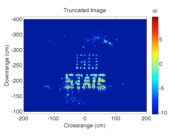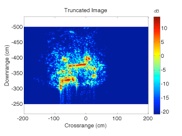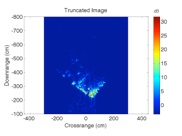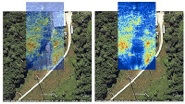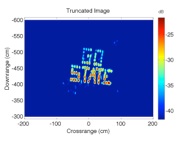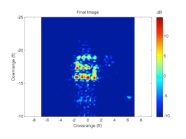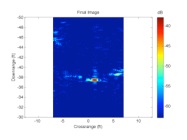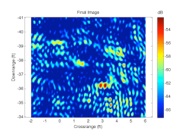
SAR Data, Phase & Magnitude
Shared here are SAR data acquired acquired on my suite of home-made radar imaging sensors during 2006-2007 while studying applied electromagnetics at Michigan State University as a graduate student. Thank you Mark Richards from Georgia Tech for the idea and to help with presenting it in a way so that it is easy for the student to use.
Download the .zip file. Using MATLAB run ‘......opendta.m.’ The attached .jpg’s show what your image should look like.
If using this for research purposes please cite the references listed in the code.
Additional sources of SAR phase data are listed below.
GO STATE in push pins. X-band UWB rail SAR data. Acquired summer ’06 using the “bakyard” rail SAR.
A bike. X-band UWB rail SAR data. Acquired summer ’06 using the “bakyard” rail SAR.
5.0 Mustang. X-band UWB rail SAR data. Acquired summer ’06 using the “bakyard” rail SAR.
Block S (for Michigan State University). S-band UWB Rail SAR data. Acquired summer ’07 using the Low-Power S-Band Rail SAR.
AFRL GOTCHA Volumetric SAR data: Gotcha Volumetric SAR Data Set Overview
Villanova, College of Engineering, Center for Advanced Communication THrough Wall At RF (THWARF) data: Experiments On Through-The-Wall Imaging
Additional SAR data sources:
‘GROUP 92’ in push pins. Acquired summer ’07 using the range-gated X-band FMCW UWB imaging system, Low-Power X-Band Rail SAR.
‘GO STATE’ in push pins. Acquired summer ’07 using the range-gated X-band FMCW UWB imaging system using 100 nw of transmit power, Low-Power X-Band Rail SAR.
MIT Coffee Can radar SAR image of terrain: http://ocw.mit.edu/resources/res-ll-003-build-a-small-radar-system-capable-of-sensing-range-doppler-and-synthetic-aperture-radar-imaging-january-iap-2011/index.htm
Block S (for Michigan State University). S-band UWB Rail SAR data using 100 pW of transmit power. Acquired summer ’07 using the Low-Power S-Band Rail SAR.
Block S (for Michigan State University). S-band UWB Rail SAR data using 10 nW of transmit power. Acquired summer ’07 using the Low-Power S-Band Rail SAR.
6” diameter copper cylinder through a 4” thick solid concrete wall. S-band UWB Rail SAR data. Acquired summer ’07 using the Low-Power S-Band Rail SAR.
Group of three vertical carriage bolts through a 4” thick solid concrete wall. S-band UWB Rail SAR data. Acquired summer ’07 using the Low-Power S-Band Rail SAR.
